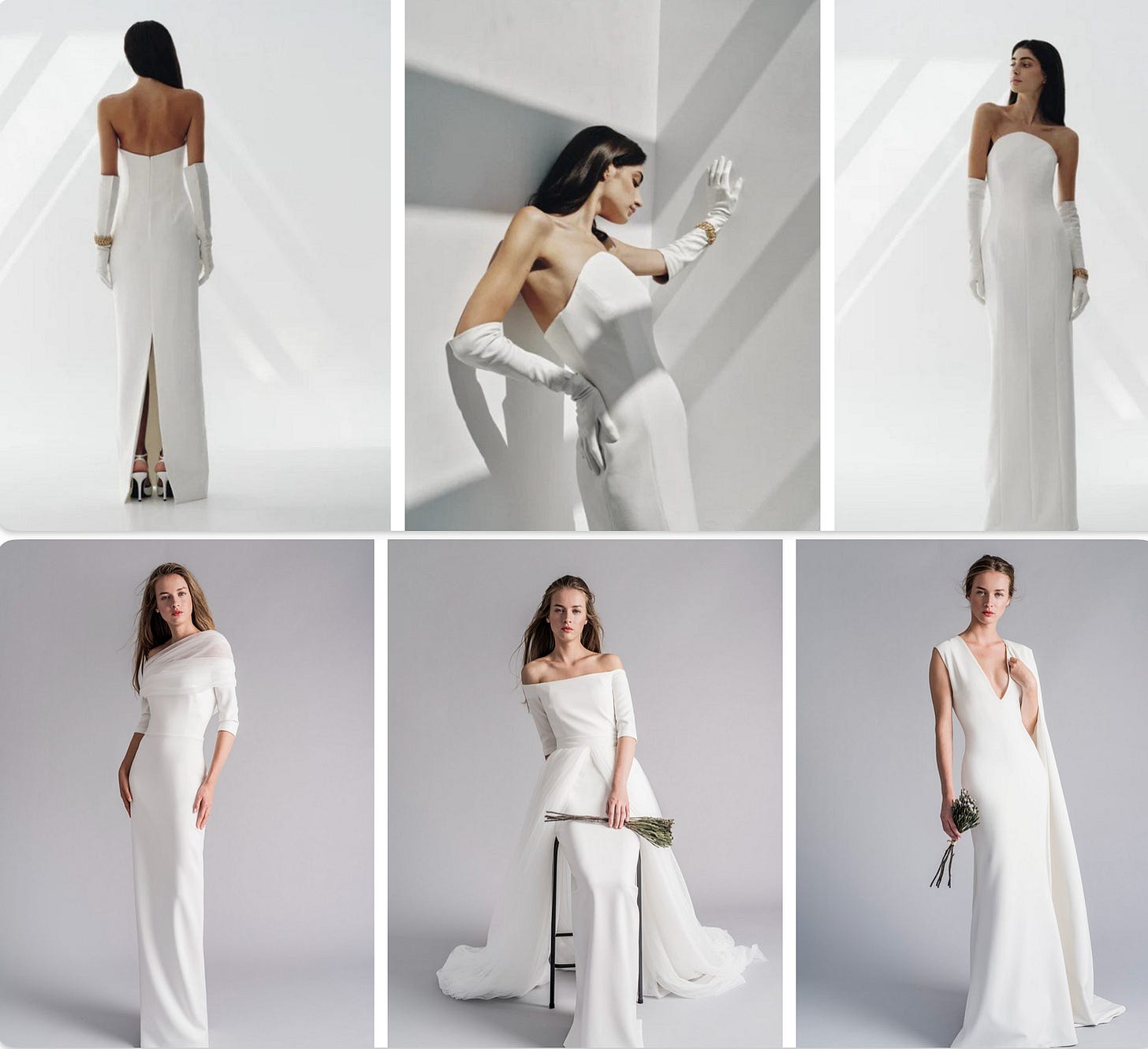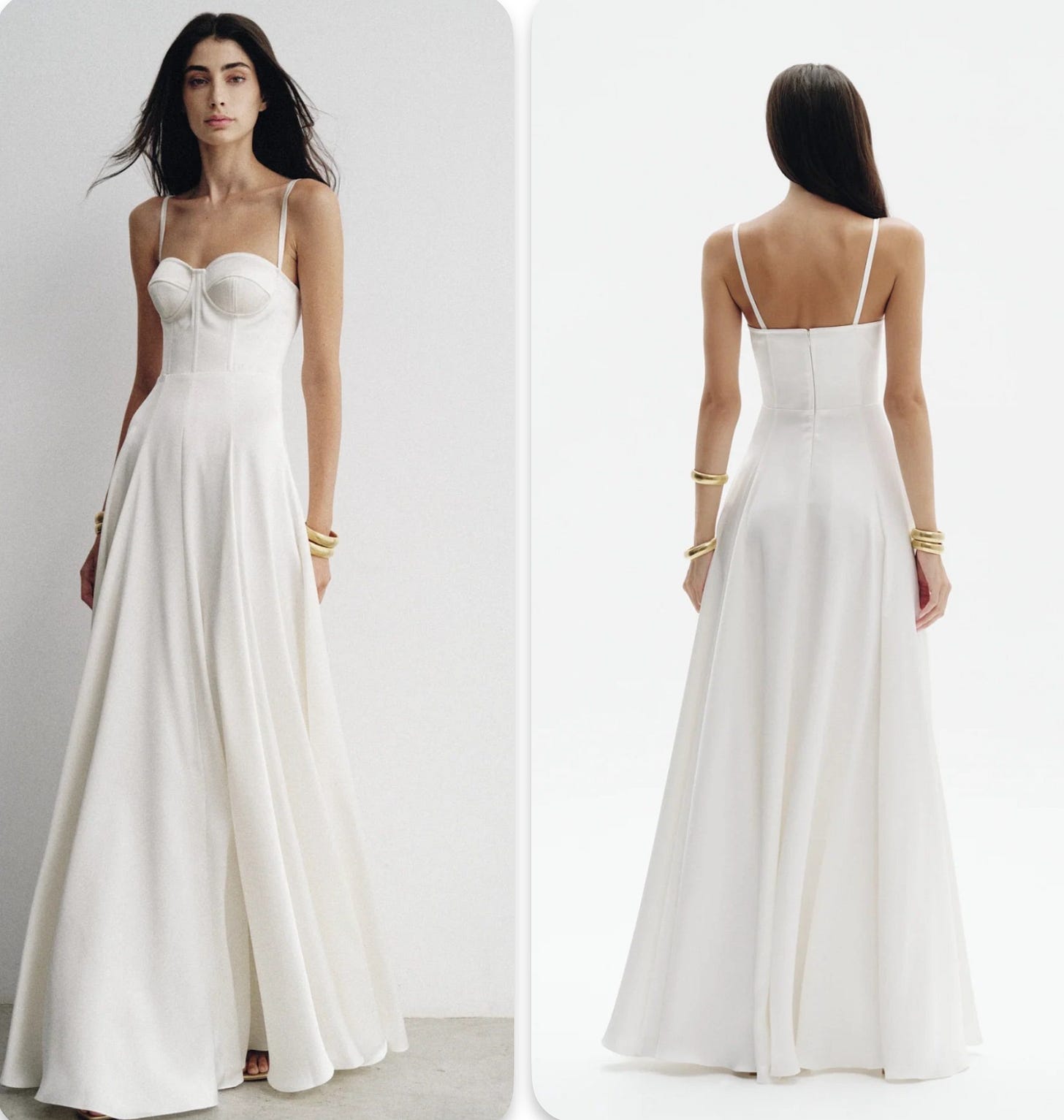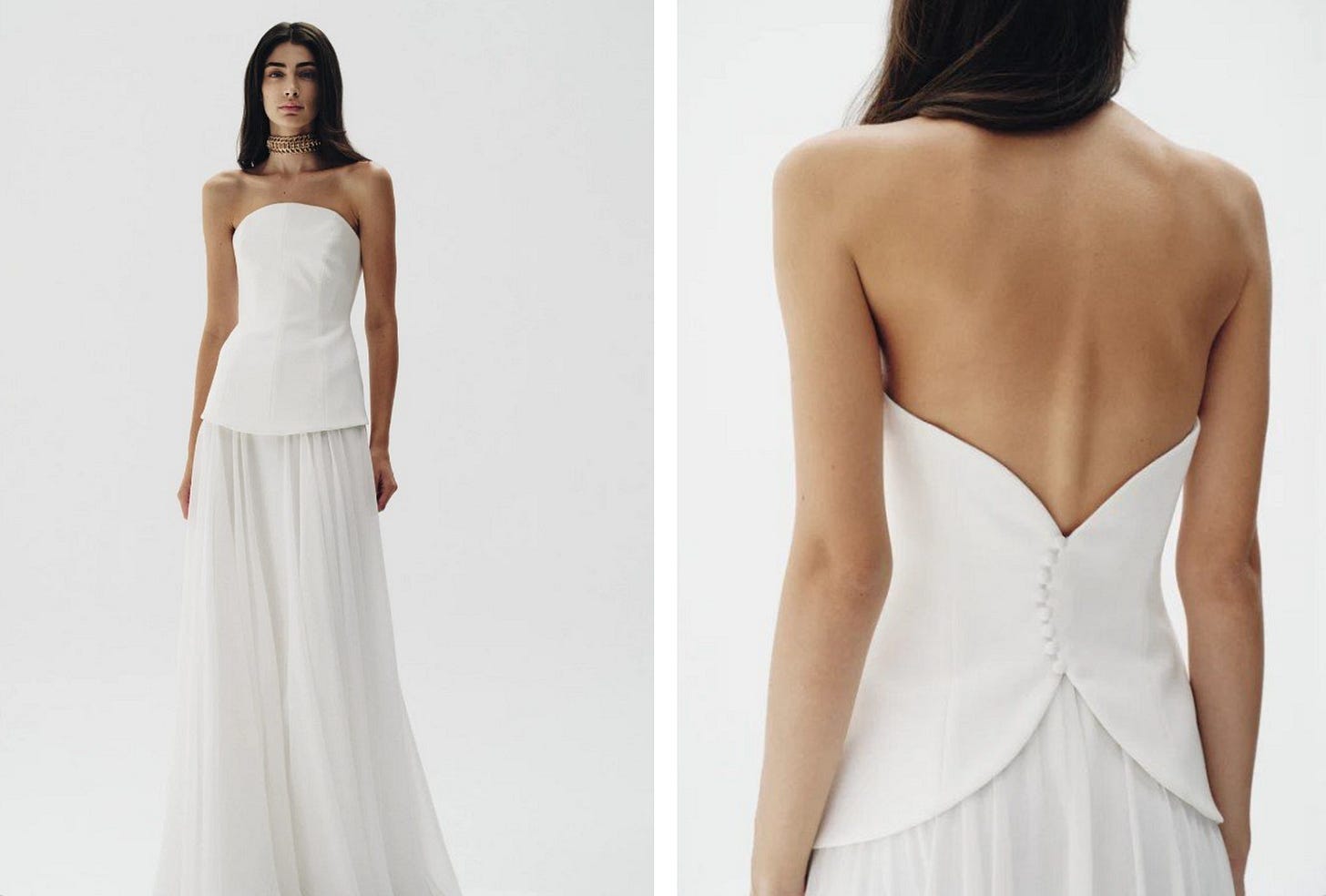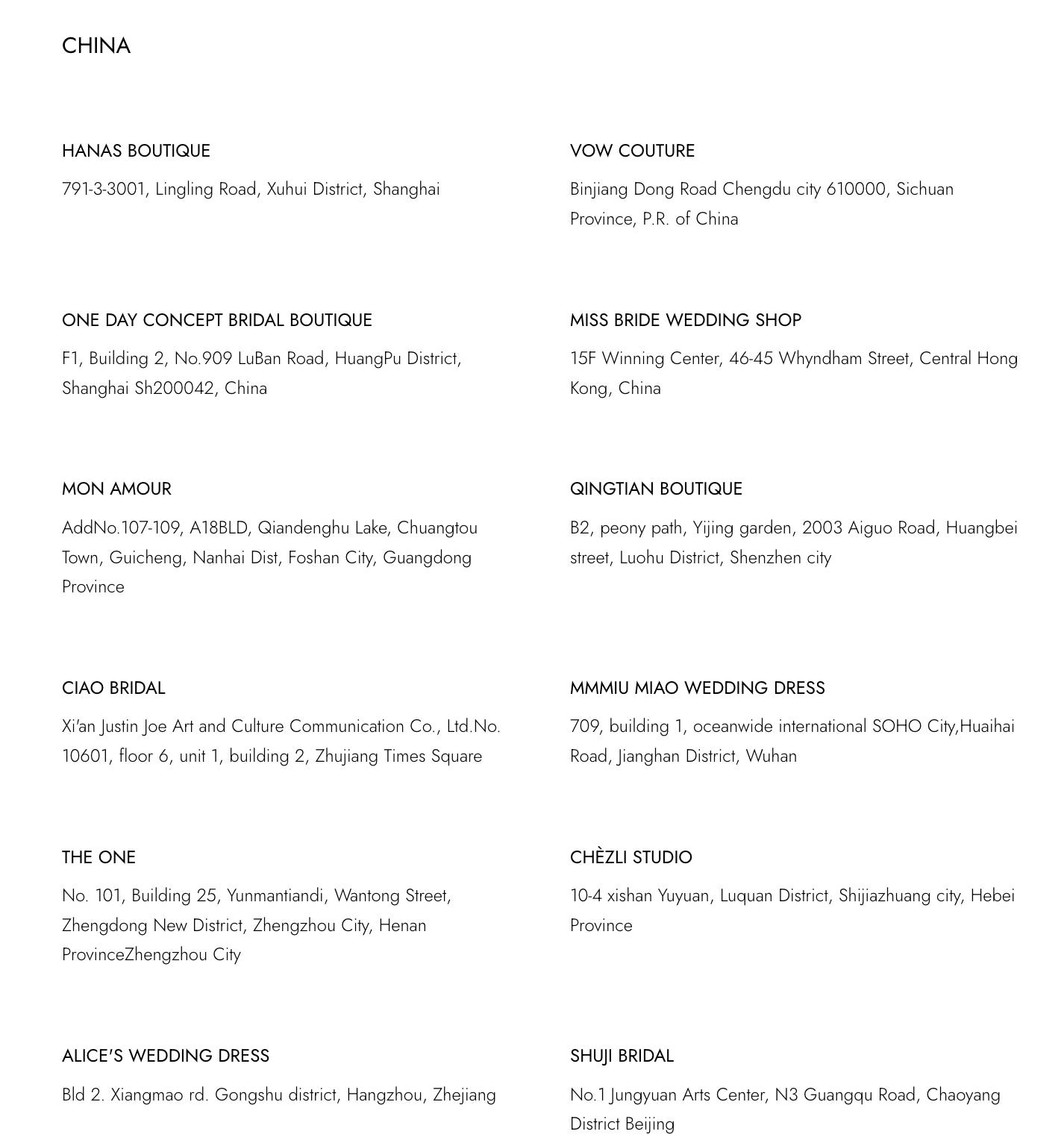Sophie et Voilà | The Spanish Minimalist Bridal and RTW Brand — A Replacement for Cortana and Khaite?
Sophie et Voilà: The Spanish Minimalist Bridal and RTW Brand — A Replacement for Cortana and Khaite?

Sophie et Voilà is a Spanish womenswear and bridal brand known for its minimalist aesthetic, with each gown showcasing refined elegance through clean lines and meticulous craftsmanship.
In comparison,Cortana, another Spanish ready-to-wear and bridal brand, leans towards a softer, more natural style, whereas Sophie et Voilà’s designs are sharper and more streamlined, making it especially suited for women who exude a strong, independent vibe.
Additionally, Sophie et Voilà has a broader distribution network compared to Cortana. Originating in the bridal sector, the brand has gained significant recognition, often appearing at Barcelona Bridal Fashion Week, further enhancing its prominence in the market.
This article will explore its ready-to-wear collection in section 02 and focus on the bridal collection in section 03. Of the recent brands reviewed, Sophie et Voilà stands out for its design excellence.
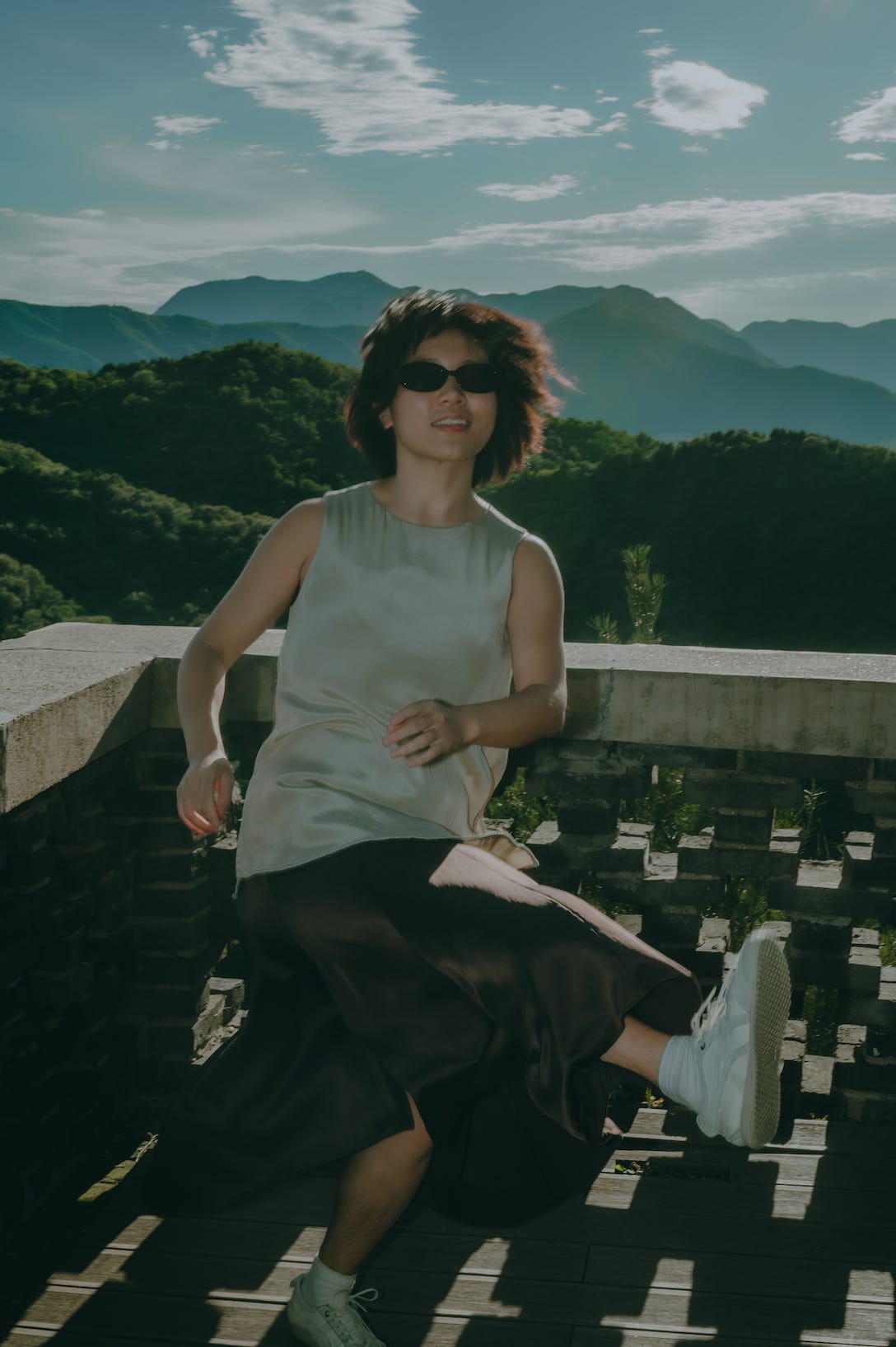
01
Founded in 2008 by Sofía Arribas in Bilbao, Spain’s largest Basque city near the Atlantic Ocean, the brand initially focused on unique bridal designs. All products are handcrafted locally to minimize transportation costs, with design, management, and manufacturing processes all conducted on-site, emphasizing sustainability and high-quality craftsmanship.
In 2016, the brand was officially established through a collaboration between Sofia (designer) and Saoia Goitia (CEO), with the two founders holding a 75% share.
By 2023, Sophie et Voilà expanded into the ready-to-wear market, aiming to penetrate international markets through collaborations with luxury retailers such as Moda Operandi, targeting primarily China and the U.S. Spain accounts for only 25% of its revenue, followed by Japan, Korea, China, and the U.S.
In terms of sales channels, U.S. customers mainly order online, while European clients prefer in-store experiences to ensure the best fit. Preferences vary by region: American and Chinese consumers favor strapless gowns, while Europeans often opt for multi-purpose designs with removable capes or shawls, as detailed in section 03.
As Sofía Arribas describes the brand’s style, it is neither overly complex nor overly simple — distinctive without being eccentric, setting it apart from brands like Khaite, which will be discussed further in section 02.
Clients are initially drawn to our designs for their unique balance of being sufficiently distinct without being peculiar. They seek neither overly sophisticated nor overly similar styles but rather a perfect blend of modernity and tradition.
02
Sophie et Voilà’s ready-to-wear collection closely resembles Khaite in terms of fabric, silhouette, and design — styles that I am personally very fond of. It’s been a while since I’ve come across a brand that captivates me like this. However, the fabrics used by Sophie et Voilà, such as cotton and polyester, fall short compared to Khaite’s.
Comparatively, Khaite’s designs have a more eccentric touch, which is a hallmark of the brand, while Sophie et Voilà leans towards simplicity and practicality.
The primary similarity between the two brands is their preference for long, sleek garments with a streamlined silhouette, ideal for covering a small belly and flattering H-shaped body types. Fitness can help with body shape, but height is a fixed trait.
A distinctive feature of Sophie et Voilà is the use of one fabric across different styles, so I’ve categorized their ready-to-wear collection by fabric types.
80% Triacetate, 20% Polyester:
The dress below is made from this blend, while the coat on the right is 100% silk. The designs are simple, proving that minimalism truly tests the skill of tailoring.
The vest and pants below are also made from acetate and polyester, while only the outer layer of the top and skirt is silk. Although this type of gauze is inexpensive, I’ve found that acetate clothing feels better than polyester and cotton but still falls short of the comfort and breathability of silk and cashmere. Acetate fabrics are suitable for spring and autumn but can be hot in summer and cold in winter.
The two sets below are also similar; the left outfit would look stunning in 40-momme silk satin, enhancing the overall luster.
Fewer brands have been using satin in recent years, often opting for power loom silk instead, citing that satin is too shiny. I believe this is a cost-cutting measure to increase profit margins.
The style on the left is reminiscent of Cortana, with a serene aesthetic. Both brands select models who are tall and slender.
On the right, the shirt is made of 100% silk, resembling fine silk gauze. Over the past three to four years, small-busted models at home and abroad have mostly stopped wearing bras, which aligns with Khaite’s model shots.
70% Linen, 30% Viscose:
The tank top, long pants, skirt, and coat all use this fabric and are part of a set. Brands that focus on cost-efficiency often use linen with viscose, while those emphasizing texture will opt for linen with mulberry silk or higher-quality hemp.
I believe the model’s physique is largely genetic; even at my thinnest, I could never achieve such a frame. However, I adore these garments that exude a cool, tall, and slender aesthetic.
The set above also has a black version.
70% Cotton, 30% Nylon:
Above is Sophie, below is Khaite. A direct comparison highlights the fabric differences — Sophie’s materials lack texture. In my opinion, garments that include nylon often look basic, appearing stuffy and lacking sophistication. The price difference reflects this: Sophie’s pieces are around
1,400 (Cortana’s dresses are also in this price range).
The three sets below are also made from nylon and cotton. Despite decent designs, the fabric quality is noticeably lower.
60% Acetate, 40% Cupro:
This dress is one of the brand’s signature pieces this year. Acetate and cupro are common summer fabrics.
The halter neck design and fringe details add uniqueness to this dress. In addition to the three colors shown below, it is also available in red.
I’m fond of these styling techniques, such as pairing loose, slightly longer
tops with shorts for a layered look. Over the past year or two, many long, loose vests in China have been made from mulberry silk.
I particularly love this kind of styling; loose tops hide a small belly, and shorts help elongate my shorter legs. The outfit on the far left appears wrinkled due to frequent washing and should be ironed or steamed after laundering. The dress featured in this article has been washed so many times that it’s faded, so a color fixative should be used in future washes.
The following dress is also made of acetate and cupro, with a detachable cape and bondage-like straps, adding a touch of sadism.
The photo’s light and shadows, combined with the green trees, are beautifully captured, evoking a strong sense of summer with vibrant sunlight and lush greenery. However, temperatures in Beijing have dropped, with highs only reaching 28 degrees. As summer fades, I plan to go hiking before the leaves turn yellow, capturing the last memories of the season.
Although Sophie et Voilà’s fabric choices aren’t exceptional, both its ready-to-wear and bridal collections showcase thoughtful design and flattering silhouettes.
03
From the images below, Sophie et Voilà’s bridal fabrics appear stiffer with more straight lines and simpler designs.
A comparison of the two Spanish bridal brands shows that Cortana’s style is more fitted, accentuating the waist and feminine curves, with fabrics that are elegant and ethereal.
Sophie et Voilà, on the other hand, has a stiffer and more structured look, with more straight lines and heavier fabrics like satin crepe. It aligns more with the quiet luxury brand aesthetic.
(Truth be told, I find it difficult to distinguish between the many types of silk fabrics.)
Both Sophie et Voilà and Cortana’s bridal collections are wearable and not overly extravagant, making them suitable for more everyday occasions. For instance, the outfit below transforms into a simple evening gown by removing the tulle cape.
Each bridal gown has unique design elements.
The top features a corset design, adding a touch of sensuality.
The bodice mimics the shape of a tulip, with a chiffon skirt and a slit on one leg. I find it looks better when stationary.
The following design is somewhat similar but without the slit, with a unique focus on the back.
I wonder if anyone has noticed the model’s shoulders. I’ve been inspired by models like these and off-shoulder outfits to start my fitness journey. It’s less revealing but still sexy, unlike abs-baring outfits that can be chilly.
I’ve previously written about fitness wear in my article 20 Items, 20 Outfits: Building My Capsule Wardrobe from Scratch for Summer. The article concludes with my workout videos, and I plan to re-record them next month as I’ve learned some effective new exercises recently.
Sophie et Voilà’s distributors mainly sell bridal collections, given the brand’s roots in bridal wear. Its ready-to-wear line only launched in 2023. Beyond China, the brand’s partners in Japan, Chile, France, Belgium, Ireland, and other countries primarily focus on bridal gowns. If you’re in need of a wedding dress, you can explore Sophie et Voilà’s network of partner stores worldwide.
https://www.sophieetvoila.com/pages/partner-stores#shop
Epilogue
Writing this article taught me a valuable lesson: whether choosing a wedding dress or selecting a brand for everyday wear, it’s insightful to look at the style of the designer or founder. The clothing they create often reflects their personal characteristics.
Gabriela Hearst’s steadfast maturity at 50, Rosa Esteva’s gentle romance, Jasmin Larian Hekmat’s sculptural creativity, and Elin Kling’s keen competence — all these designers’ core spirits and aesthetics are invariably embodied in the clothes they design.

by: pamperherself




















